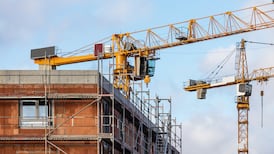A mass mobilisation of Irish society will be required over the next decade if 1.6 million houses are to be retrofitted and 600,000 heat pumps are to be installed in homes, an International Energy Research Council (IERC) conference has been told.
The IERC's senior energy policy analyst Piyush Verma said achieving those targets by 2030 would bring widespread social benefits especially in reducing poverty.
In addition, the retrofitting programme would create 32,000 new jobs, generate €600 million in economic savings every year, and €4.5 billion in extra disposable income for citizens to spend.
This in turn would increase the possibility of a better quality of life, provide a local economy boost and increase property tax revenues by up to €39 million annually, he predicted.
Retrofitting at that scale would not only help Ireland achieve its 2030 decarbonisation targets – in particular a 51 per cent cut in emissions, saving 12.7 million tonnes of CO2 equivalent every year – it would increase the country's energy security, ending a scenario where 61 per cent of energy in the form of oil was currently imported.
Analysis
The figures are based on IERC analysis which recommends exceeding current retrofitting ambitions in terms of speed and scale, due to the benefits available and the magnitude of potential financial returns, to meet Ireland’s targets for a shared, decarbonised, climate-neutral future for 2030 (under the Government’s climate action plan); project Ireland 2040, the European green deal for 2050 and beyond, he added.
A "national retrofit renovation wave" could reduce fuel poverty by ending "the trade-off between food and heating in poor houses , and save on healthcare from reduced air pollution and better sleeping conditions, Mr Piyush said.
One direct benefit from a countrywide cost-optimal retrofitting programme to a B2 rating would be the reduction in energy use (totalling 53 terawatts per hour). Rolling out the programme was not just a technical challenge but would require a multi-stakeholder approach, he suggested.
Sustainable Energy Authority of Ireland chief executive William Walsh said the SEAI intended to kick-start the movement, while getting rid of fossil fuels in the Irish energy system. The proper financial mechanism "to bring people on the journey", was essential, he believed.
“An attractive and smart financial package has to be in place,” he underlined.
While Ireland had unique climate challenges because of a strong agricultural sector, dispersed housing and was an island state, Mr Walsh said it had distinct advantages including a sea area 10 times larger than its landmass that was ideal for offshore energy and a grid with capacity for large volumes of renewables.
Prof Brian Ó Gallachóir of MaREI energy research centre said it was incorrect to say Ireland had done nothing on decarbonisation, “but compared to what’s ahead of us, it’s very small”.
Timeframe
Decision-making when it came to retrofitting homes and businesses inevitably took time though the timeframe up to 2030 was short, he noted. Ireland had a target of 10 per cent EVs on Irish roads by 2020, which should have resulted in 200,000 EVs rather than the 10,000 at present.
Achieving demanding targets "won't happen by themselves", he added; significant supports would be needed. It would also require being flexible and looking outside the box. Sweden for instance had developed renewable diesel within a very quick period, he said.
It also required asking searching questions such as “do we need carbon capture and storage before 2030? Do we need hydrogen by 2030?” to meet emissions targets.
On achievability, he said a year ago he would have said there was no chance a 51 per cent emissions reduction target could be achieved. But because of the societal response to Covid 19 and greater climate ambition, he believed this was now possible.
Agriculture did not have the same mitigation options as in other sectors, he accepted. While the policy debate often pitched farmers against others, Prof Ó Gallachóir pointed out the Dingle Peninsula 2030 project was being enthusiastically supported by local farmers in embracing emerging low-carbon technologies and exploring how to make their businesses more sustainable.













